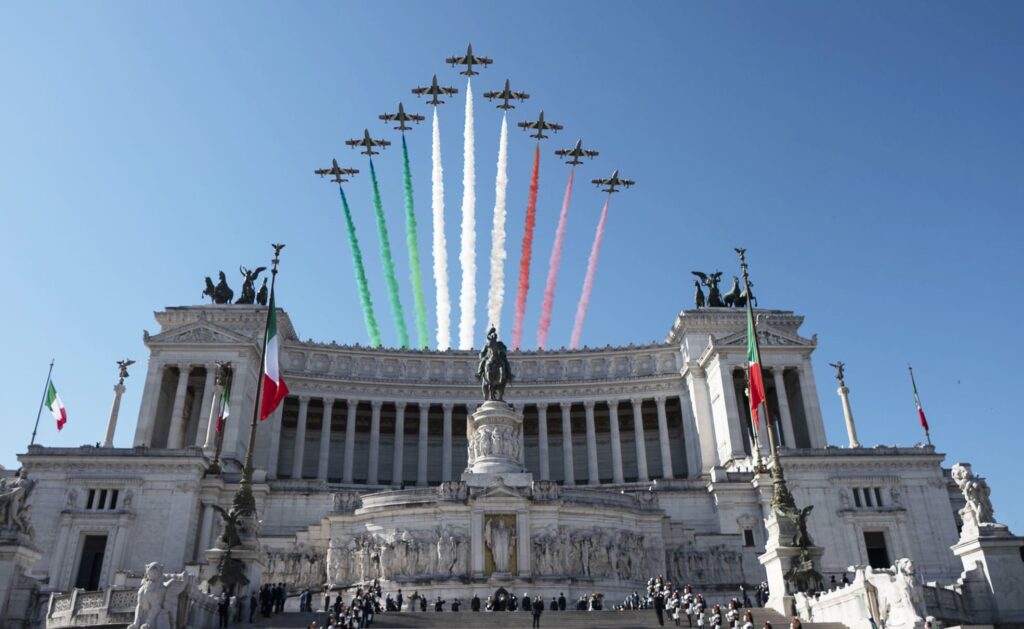Discover the Flavors of Felitto
A Ciaulieddo Felittese Recipe!
Have you ever wanted to know what summer in Southern Italy tastes like? This is a culinary journey to Felitto, a town known for fresh produce and seasonal dishes. At the heart of this summer feast is Ciaulieddo felittese.

It is the ultimate celebration of summer’s harvest – a flavorful and hearty stew of sun-ripened vegetables. While variations exist, the essence of Ciaulieddo is its simplicity and fresh ingredients.
What is Ciaulieddo Felittese?
“Ciaulieddo felittese” is a seasonal vegetable dish with zucchini, eggplant, peppers, tomatoes, and basil. It is similar to other vegetable stews, such as Ciambotta or Cianfotta. The Florimontes from Felitto who immigrated to Cincinnati called this dish “gagootz” which is a slang term for the green cucuzza squash that fed poor immigrant families.
Create Your Own Ciaulieddo Felittese
There is no “single recipe” as this dish is made with what is fresh, and what you have.
Here are the basic components to recreate this Felitto specialty:
Ingredients:
- 1 medium eggplant, diced
- 1 medium zucchini, diced
- 2-3 bell peppers (any color), chopped
- 1-2 ripe tomatoes, diced (or a can of diced tomatoes)
- 1 small onion, chopped
- 2-3 cloves garlic, minced
- Fresh basil leaves, torn or chopped
- Olive oil
- Salt and pepper to taste
- (Optional additions): A handful of fresh potatoes, carrots, cherry peppers, olives, or capers to personalize your stew.
Instructions (Stovetop Method)
- Sauté Aromatics: Heat olive oil in a large pot or Dutch oven over medium heat. Add the chopped onion and minced garlic and sauté for 3-5 minutes. If you are adding garbanzo beans, add them now.
- Layer in the Veggies: Add the eggplant, zucchini, and peppers to the pot. Stir to coat the vegetables with the olive oil.
- Simmer and Season: Add the diced tomatoes (and any optional vegetables like potatoes or carrots if using). Season with salt and pepper. Stir.
- Cook to Tenderness: Reduce the heat to low, cover the pot, and let the stew simmer for 30-40 minutes, or until the vegetables are soft. Stir occasionally.
- Finish with Fresh Herbs: Before serving, stir in the fresh basil. Taste and adjust seasoning as needed.
Instructions (Baked Method)
- Preheat and Prepare: Preheat the oven to 375°F (190°C). Lightly grease a large baking dish.
- Combine Ingredients: In the baking dish, combine all the diced vegetables (eggplant, zucchini, peppers, tomatoes, onions, garlic, and any optional additions). Drizzle with olive oil and season with salt, pepper, and a few torn basil leaves. Toss to coat.
- Roast to Perfection: Bake for 20-30 minutes, or until the vegetables are cooked through.
- Serve and Enjoy: Finish with fresh basil.
Serving Suggestions
Ciaulieddo felittese is delicious on its own as a light meal, or it can be served as a side dish to grilled fish or chicken. It is also great with bread for soaking up the juices. You can also enjoy the baked version at room temperature or on toasted bread for a bruschetta-style appetizer.
Make it Your Own!
The adaptability of a vegetable stew like Ciaulieddo felittese is a benefit. Feel free to experiment with seasonal vegetables. Adjust the seasonings or add red pepper flakes for spice. Enjoy this taste of Felitto in your own kitchen! For a heartier dish, I add garbanzo beans or cannellini beans.
















